“I always used to joke that I ruined Linda’s career,” Paul McCartney says, sitting on a sofa in his office in Soho, in central London, with a selection of his late wife’s photographs spread on the table before him. “She became known as ‘Paul’s wife’ instead of the focus being on her photography. But, as time went on, people started to realise that she was the real thing. So, yeah, she eventually did get the correct reputation, but at first it was just blown out of the water by the headline-grabbing marriage.”
He has a point. Before she met and married him, in March 1969, Linda Eastman was an award-winning photographer. Born in 1941 and raised in a suburb of New York, she had studied under Hazel Archer – who taught the artist Robert Rauschenberg, among others – and was the first woman to shoot a Rolling Stone cover, featuring Eric Clapton. Her speciality was capturing pop stars in unguarded moments: a tearful Aretha Franklin; Jimi Hendrix mid-yawn; Janis Joplin backstage, her bottle of Southern Comfort already drained. But marriage to a Beatle tended to overshadow your own work and reputation, as Yoko Ono discovered.
It wasn't until years later that her talent was reappraised: 1976's unassumingly titled book Linda's Pictures was the first in a series of collections of her work. If anything, her reputation has grown since her death in 1998; the Linda McCartney Retrospective, which opens at Kelvingrove Art Gallery in Glasgow next week, is just the latest global exhibition of her work. It was curated by McCartney, along with their daughters, Mary and Stella; here, he picks six of his favourite photographs. "As you can probably tell," he says, after an exhaustive account of one of the McCartneys' family holidays in Orkney in the early 1970s, "I like talking about this stuff."
BB King, 1968
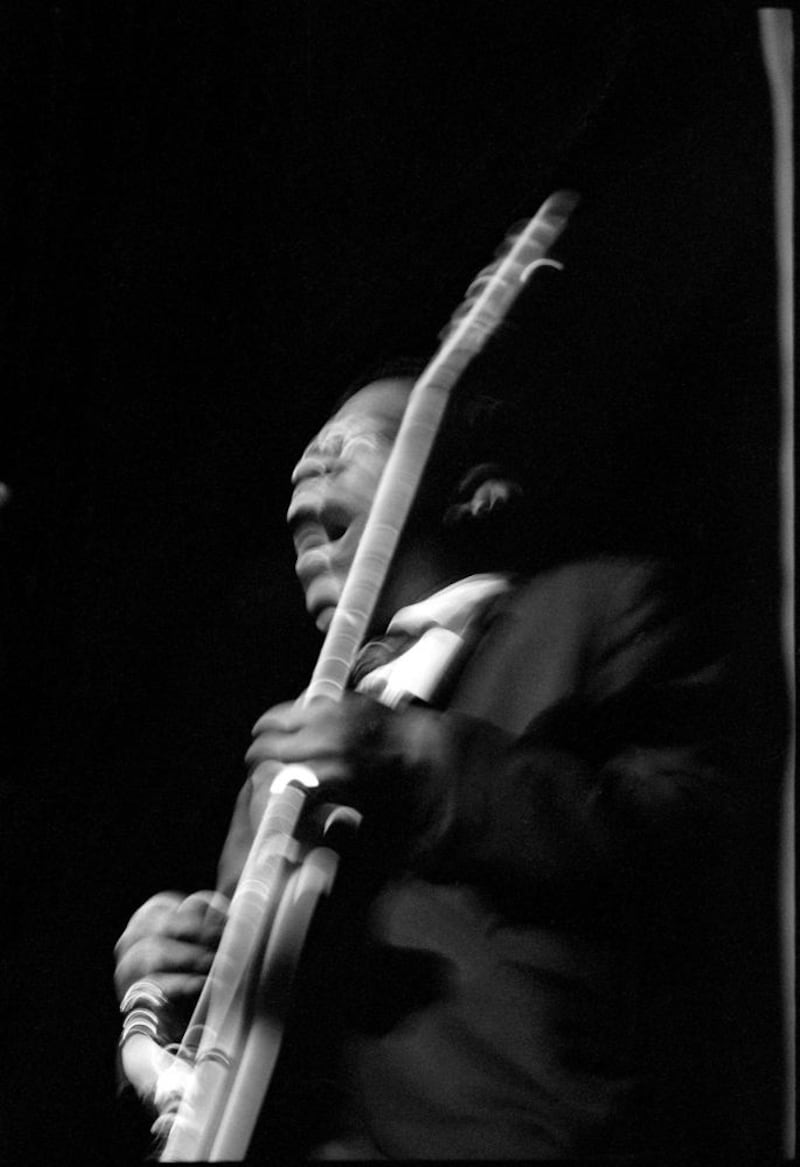
“This was taken before I got to know her. Linda was the resident photographer at the Fillmore East [music venue], in New York. She would go to the Fillmore, or other events, and there would be other photographers there, who would say to her, ‘Who’s this? Who’s this guy playing?’ and she would know. She loved the music so much, she listened to it all the time, so she just knew: this is the Grateful Dead, this is BB King, this is Buddy Guy, this is Janis Joplin, you know? That always comes to mind when I see this picture; I imagine her crouched down, by the stage, taking photos of BB King.
"She was a great believer in the happy accident. Where other people might have said, 'Well, this is blurred; we can't use this one. We'll go and look for the sharper photographs,' she went with it. I love this picture – his guitar looks like an instrument from the future, a space-age thing. It just looks to me like his music sounds: exciting blues. A friend of ours, Brian Clarke, made a stained-glass window of this image, which is fabulous: I've got it in my studio."
The Beatles, 1967

“This is the press launch for Sgt Pepper’s Lonely Hearts Club Band, at Brian Epstein’s house in Belgravia – 24 Chapel Street [in London]. We were lining up for various photographers, and Linda was one of them. I think it was the second time I’d met her. She’d come to England to do the photos for a book, Rock and Other Four-Letter Words, by a writer called J Marks. She photographed The Animals, The Yardbirds, a lot of British acts for the book, and she was invited along to this.
“One of the great things about Linda was she knew when to click. The photographers she admired were people who got those off-the-cuff moments – Walker Evans, [Henri] Cartier-Bresson, [Jacques Henri] Lartigue – where what they’re doing is a form of reportage that actually moved into art. If you think about the famous Cartier-Bresson photo of the guy jumping over a puddle [Behind the Gare Saint-Lazare, 1932] – it’s all about capturing that split second. Linda could instinctively feel a moment happening. That’s what’s happened here. John and I have gone [posh voice]: ‘Hello, old chap, how are you?’ ‘Nice to meet you, jolly good!’ You’ve got John being funny, me in stitches at him and George and Ringo both loving it. It shows the relationship between us all.
“Linda put you at your ease. Some photographers, you’re very aware that you’re having a picture taken. But she had such a relaxed attitude that she’d get a picture of Jimi Hendrix, but he’d be yawning in it. He felt comfortable enough to yawn, she felt confident enough to take a picture of him yawning, knowing he wouldn’t mind.”
John and Paul, 1968
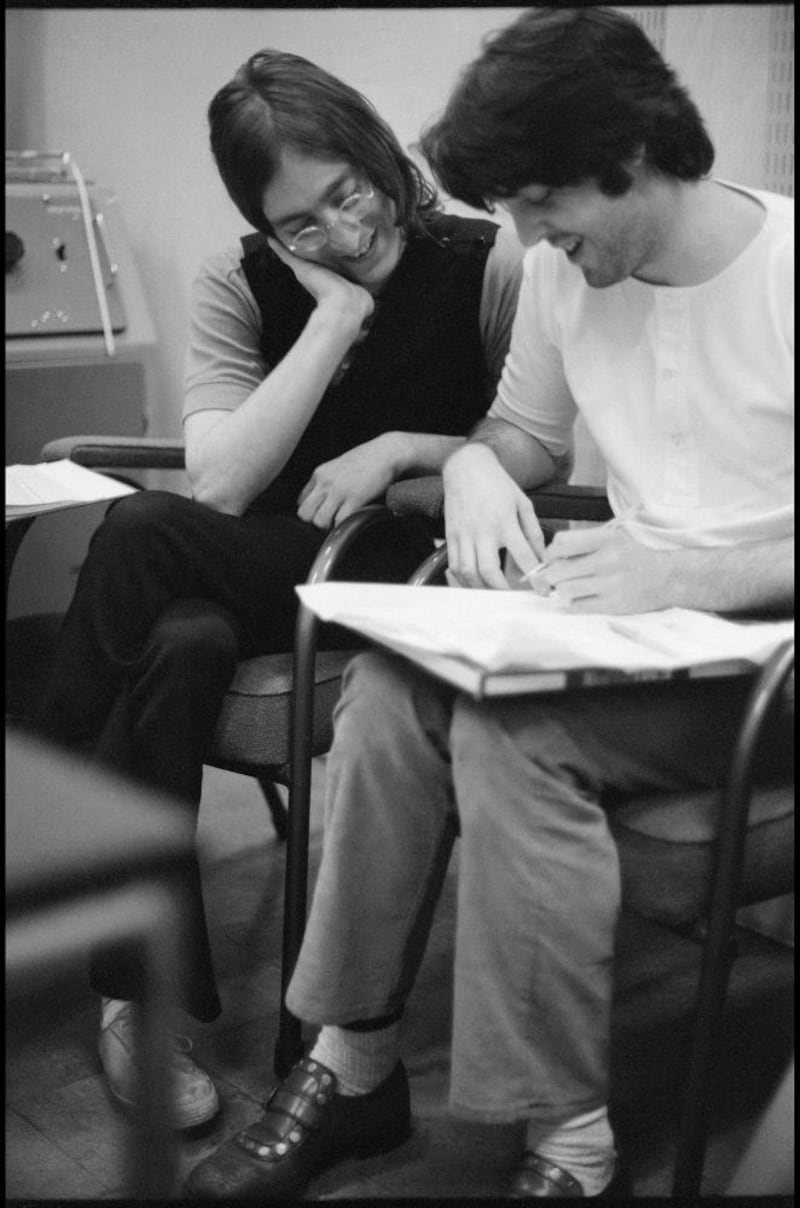
“This is me and John, in Abbey Road. It wasn’t too long before the break-up of The Beatles; this would be the end of our relationship, and, at the end, when the breakup happened, it was kind of sour – very difficult to deal with. The rumour started going around that John and I didn’t get on well, we were arch-rivals, that it was very heavy and ugly. The strange thing is you sometimes get to believe something, if it’s said enough times. So I used to think, Yeah, it’s a pity, you know, we didn’t get on that well.
“So this picture is a blessing for me. It’s, like, this is how we were: this is why we related, or else we couldn’t have collaborated for all that time. It sums up what our relationship was like the minute we were actually working on a song, and most of the time we were together, really. I’m just writing something out – possibly it’s a medley or something; it might be for Abbey Road – and it’s lovely, because John is very happily in on the process, and agreeing with me, and we’re laughing about something. Just seeing the joy between us here really helped me, because it reminds me that the idea we weren’t friends is rubbish. We were lifelong friends. Our relationship was superspecial.
“That applied to all the Beatles, even when we were pissed off with each other from time to time. People used to remind me: that’s families, that happens. Mates disagree. As soon as we started working on music, we gelled, we just enjoyed the noise we made together, we enjoyed playing with each other. We’d worked together for over 10,000 hours over the years, and that old spirit automatically kicked in. Any disputes were got over very quickly.”
My Love, 1978
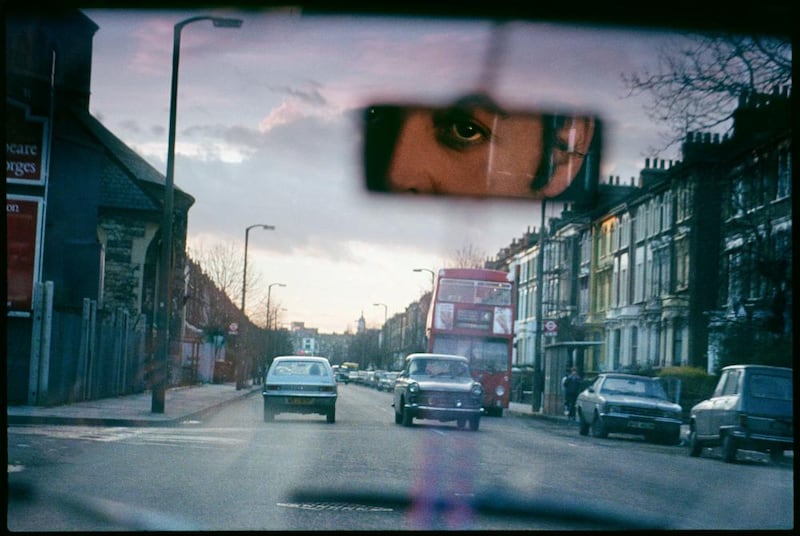
“This was taken in London in 1978. I love it because it’s a historic piece, because the cars and everything date it, but it’s also a really good portrait of me.
“Technically, I still don’t get this one, because there’s me in the rear-view mirror and I’m in focus, but the houses are in focus and the bus is in focus as well. So I don’t get how that worked. It’s not a montage, it’s a straight photo. And the other thing is that I’m driving, and I think Linda is taking the picture with one of our babies on her lap – if you look, there’s a very faint reflection in the windscreen. Talk about multitasking.
“One of the things about Linda, when you talk about how people seem at ease in her photos, is that it was her lifestyle. We’d say, ‘Let’s go out of London,’ so I’d just drive, we’d get out of London and I’d say, ‘Where do you want to go?’ She’d say, ‘Just anywhere.’ After a while you’d end up in areas you didn’t know, going, ‘Ooh, I’m getting a bit lost here,’ and she’d say, ‘Great.’ You were in places you’d never been, you were seeing things you hadn’t intended to see, all of which was rich stuff for her photography. I remember I wrote the song Two of Us about that – ‘Two of us riding nowhere / Spending someone’s hard-earned pay.’ That was one of those excursions, when we were first going out together, this great idea of getting lost. Until I met Linda, I panicked when I got lost, you know?”
Mother and child, 1969
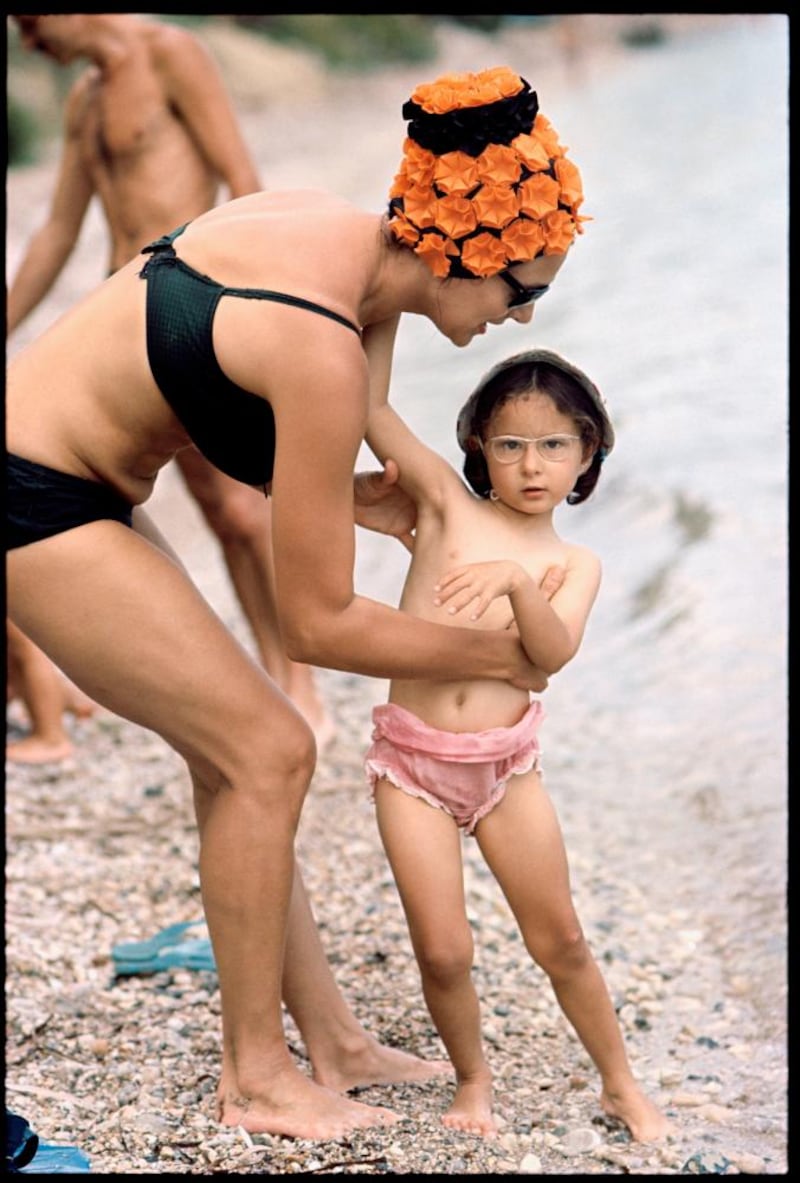
“Linda took a lot of pictures of ordinary people that to her seemed extraordinary. This was when we were in Greece on holiday. We wouldn’t go to the big places; we’d just go to a little beach. That was very much my relationship with Linda. She’d had a reasonably strict upbringing, what with her father being a lawyer, but then she’d started to smell freedom when she went to university in Arizona. She loved riding; she had a horse out there that her friend’s parents let her ride… It was the dangerous seeds of freedom. And when she met me I’d been like a robot, having to go on tour, make a record, go on tour, do this – and I’d had it up to here. So we started to have a life where we didn’t have any plans. We’d go to Greece, book a hotel and just bum around. That feeling, that sniffing freedom, it went all the way through her photography and my music [on 1970’s McCartney and 1971’s Ram].
“One day, we were just on the beach, having a swim, but she’s seen this mother and child, and it’s an interesting moment, so she’s just grabbed her camera and snapped it. She wouldn’t have used a whole reel on it; it could even be the only shot. Because she’d had to do things quickly, she’d just worked on the hoof, without an assistant. She didn’t use light meters often – she guessed – so she just went out with a pocket stuffed with film, camera around her neck, and that would be it. There’s something fascinating about this moment she’s caught, the way the kid is looking into the camera eerily, the mum with this incredible bathing hat on. I could look at it for hours.”
Paul, 1968
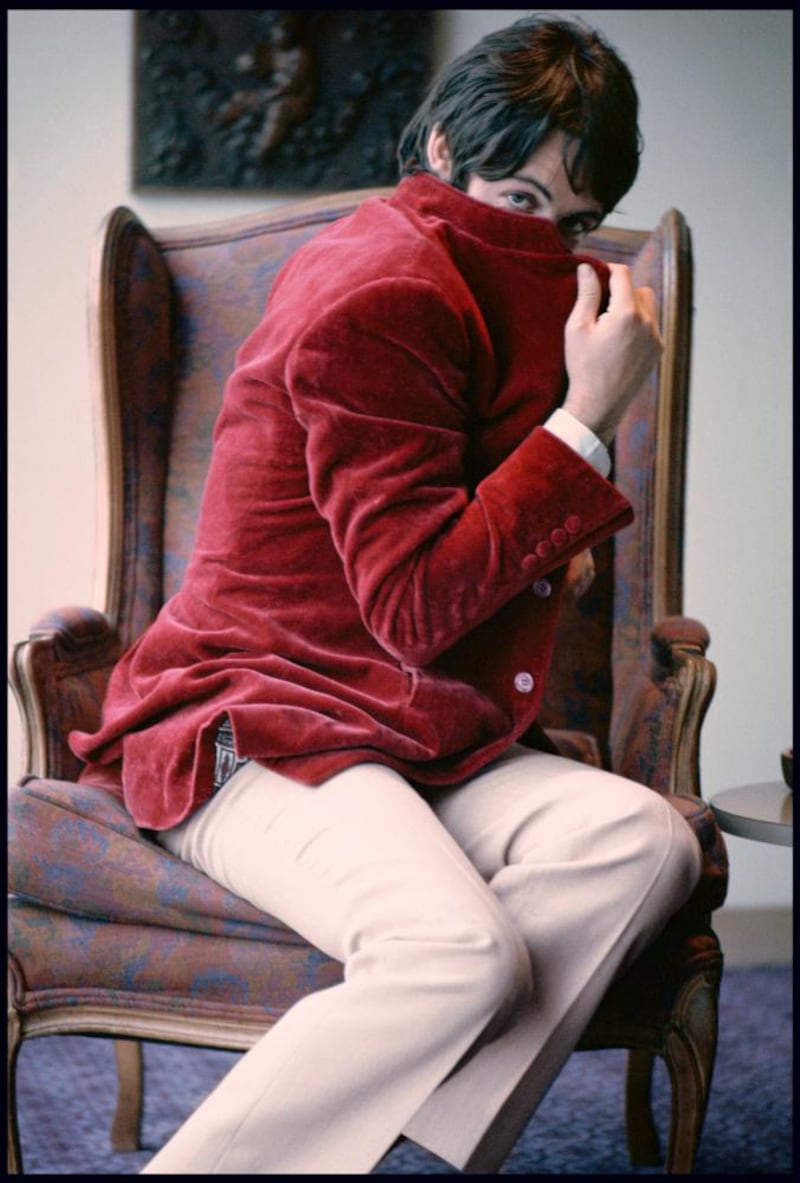
“This was at the airport in Los Angeles. I had to do something record-related – I think it was a convention that Capitol, our American record label, were having – and she happened to be in LA, so she could hang out with me. She’d turn up at the hotel and we’d say, ‘Oh, what are we going to do today? Shall we do something? Well, let’s just stay in,’ and we’d just do nothing, basically. We loved that freedom. It was an important thing in a relationship, that neither of us minded doing nothing much.
“So this is us parting after our little trip. I was going back to England and she was catching another flight, going back to New York. I think I was there with a guy called Magic Alex [Mardas, the Beatles’ notorious “electronics wizard”, whose various schemes reputedly cost the band about €6 million in today’s money without yielding any results]. While we were waiting, she would just have her camera there, lift it up, click, get the shot, put it down again. So I’m goofing; I’ve pulled my jacket up and sort of masked my face. I’m going back to England, back to The Beatles, and I’m hiding: ‘No photos please!’ It was just a joyous little moment before we went our separate ways. But, you know, luckily, we hooked up again and, er… made a go of it!” – Guardian
The Linda McCartney Retrospective is at Kelvingrove Art Gallery, Glasgow, from Friday, July 5th, until Sunday, January 12th, 2020












